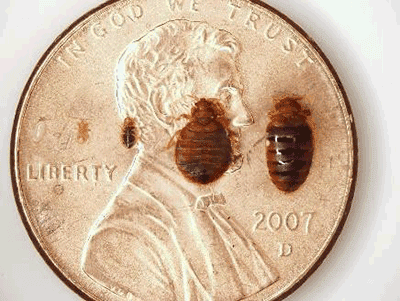Comprehensive A1 Bed Bug Extermination in Houston Area
Comprehensive A1 Bed Bug Extermination in Houston Area
Blog Article
Comprehending the Lifecycle of Pests for Targeted Control Methods
Recognizing the lifecycle of bugs is a fundamental aspect of reliable parasite monitoring strategies. By comprehending the different phases of growth that parasites undergo, a much more exact and targeted method can be adopted to control their populaces. This understanding not just clarifies the vulnerabilities within the bug lifecycle however additionally leads the way for executing tactical actions that can disrupt their development and recreation cycles. With a much deeper understanding of exactly how parasites thrive and evolve, tailored control approaches can be designed to address certain factors in their lifecycle, eventually bring about more effective bug administration end results.
Relevance of Recognizing Parasite Lifecycle
Comprehending the lifecycle of parasites is necessary for establishing effective and targeted control methods in insect administration. By understanding the various phases an insect experiences from egg to adult, bug control experts can identify prone factors in the lifecycle where intervention can be most effective. Understanding when larvae are most energetic can assist figure out the ideal timing for applying larvicides. Additionally, recognizing the life expectancy of a parasite types can help in forecasting populace development patterns and possible infestation threats.
Furthermore, identifying the certain environmental conditions needed for every stage of the insect's lifecycle can assist decisions on habitat adjustment or exclusion approaches to interrupt the lifecycle and minimize pest populaces. This knowledge enables pest monitoring specialists to carry out proactive procedures instead than counting entirely on reactive treatments, leading to more long-lasting and lasting insect control solutions. Eventually, a complete understanding of bug lifecycles equips insect control professionals to customize their strategies properly, taking full advantage of and minimizing environmental effects control end results.
Secret Phases in Pest Advancement
To successfully carry out targeted control techniques in bug management, a vital aspect exists in comprehensively determining and understanding the essential phases in parasite advancement. Bug advancement generally consists of numerous essential phases that are critical for their lifecycle and monitoring.
.jpg)
Vulnerabilities in Parasite Lifecycle
Throughout the various phases of a parasite's lifecycle, distinctive susceptabilities emerge that can be tactically targeted for effective control procedures. One essential vulnerability lies in the egg phase, where bugs are often extra vulnerable to certain pesticides or organic control agents due to their soft external shell, making them less complicated targets for treatment. Additionally, the larval or nymph stage offers susceptabilities as bugs go through rapid growth and growth, calling for high power usage that can be manipulated by interrupting their food resources or introducing growth preventions. Pupal stages, identified by stability and improvement, use a window for targeted control through physical barriers or details therapies that impede effective introduction. Grown-up bugs, while go to these guys extra resistant due to their reproductive ability, can still be vulnerable during mating or egg-laying activities, which can be interrupted with scent traps or sterilization strategies. Recognizing these susceptabilities in the pest lifecycle is necessary for creating efficient and accurate control approaches that effectively manage bug populations while reducing ecological influence.
Executing Targeted Control Steps

Applying targeted control steps commonly involves a multi-faceted strategy. This might consist of habitat alteration to make the environment less friendly to bugs, such as eliminating standing water for mosquito control or sealing access factors for rats. Additionally, biological control approaches can be made use of, where natural predators or pathogens are introduced to maintain pest populaces in check.
Integrated Bug Monitoring (IPM) methods that combine different control procedures in a coordinated and sustainable manner are frequently the most efficient in attaining long-term bug management objectives. By implementing targeted control procedures based on an extensive understanding of parasite lifecycles, bug populaces can be successfully controlled while reducing risks to human health and wellness and the setting.
Boosted Pest Administration Practices

Furthermore, the consolidation of organic control representatives, such as natural killers or virus of parasites, can help in reducing reliance on chemical pesticides and advertise a more well balanced community. Executing physical obstacles and catches can also belong to improved parasite administration methods, supplying safe and targeted options for pest control. In addition, the use of pheromones and various other semiochemicals can interrupt pest breeding patterns and interaction, leading to lowered insect populations with time.
Final Thought
Finally, comprehending the lifecycle of parasites is vital for reliable pest monitoring techniques. By determining crucial stages in parasite try here growth and susceptabilities in their lifecycle, targeted control steps can be implemented to minimize bug populations. Improved bug management practices can help in reducing the reliance on broad-spectrum pesticides and advertise more sustainable and eco friendly pest control techniques. This expertise plays a vital duty in preserving healthy and balanced communities and agricultural productivity.
Recognizing the lifecycle of pests is essential for developing effective and targeted control methods in parasite monitoring. By comprehending the numerous phases a parasite goes with from egg to grownup, pest control specialists can identify at risk factors in the lifecycle where treatment can try this be most successful. Eventually, a detailed understanding of bug lifecycles encourages insect control professionals to tailor their techniques effectively, decreasing ecological effects and maximizing control end results.
By carrying out targeted control measures based on a comprehensive understanding of parasite lifecycles, insect populaces can be properly controlled while minimizing dangers to human health and the atmosphere.
By recognizing key stages in bug growth and susceptabilities in their lifecycle, targeted control steps can be applied to lessen pest populations.
Report this page